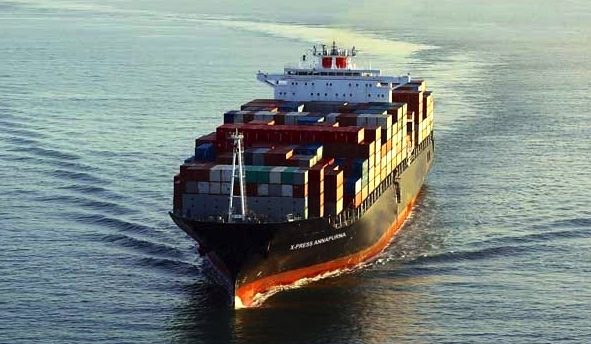X-Press Feeders among six shipping investors in Mikal Bøe’s nuclear venture

Tim Hartnoll-led X-Press Feeders, the largest independent common carrier in the world, has bought into CORE POWER, a British firm developing advanced atomic power solutions for shipping. X-Press Feeders is one of six significant shipping names to have invested in the London-headquartered atomic firm, it was revealed today.
Mikal Bøe’s CORE POWER, together with Bill Gates-chaired TerraPower, Southern Company and French atomic group Orano, is developing a modular molten salt reactor (m-MSR) to propel ships and provide reliable energy for manufacturing synthetic green fuels from hydrogen. The first prototype reactor is due to start trials in 2025.
According to a release on the X-Press Feeders site, the technology it is investing in delivers a base power load with zero emissions and minimal residual waste on decommissioning. It will measure 3.5 x 3.5 x 7.5 m, weighing 450 tons and it can be produced in factory-controlled conditions.
No details on the size of the investment have been made public.
This is what shipowners do best, put their money where their mouth is
X-Press Feeders has also revealed it is investigating possibilities to get some of its future ships powered by either methanol or ammonia, both of which can be produced with MSR power.
“We are witnessing an energy transition, the like of which we have not seen since the transition from coal to oil,” Hartnoll wrote in a release posted on the X-Press Feeders site.
Bøe commented to Splash: “The Hartnolls have been outstanding in their support for our work. Having the support of a global industry leader is an endorsement of our vision to provide a safe, long term, sustainable energy source for shipping. We’ve secured substantial investments from six significant household shipping names so far. I believe this is what shipowners do best, put their money where their mouth is.”
The CORE POWER units Bøe’s team has developed for shipping use high-assay low-enriched uranium, capable of powering the largest ships afloat today.

WHO ARE THOSE PROLIFERATION-INVESTORS WITH WASTE-MONEY PORTFOLIOS FOR m-MRS NUKES IN MERCHANT SHIPPING?
What is the NPV, the IRR and the WACC, of the Investment, with unknown NPP life-cycle cost (construction, operations, decommissioning) when there are no MSRs in commercial operation, or under construction globally as from 2019 (IAEA, 2019).
Private m-MRS “Fabricators”” step-in for the big milking of the skinny Shipping Cows, at a cost equal or higher of a Newbuilding and lead time of X-years.
When the Financing neglects uncertainties on the main objective of life-cost which is limited to claims from vendors without objective research. With Manufacturers estimating OC: $2000-$4000 /kWe.
Which “shipping convenient crews” will accept exposure to health risk and could handle the processing hazards of m-MSRs at all phases of operation, from initial fuelling to maintenance outage, to salt conditioning, to shut-down and waste handling, that have distinctive attributes on those reactors?
Besides Risks of: Proliferation (IPCC), Environmental: radioactive waste, e-carbon emissions of 14 to 76 g-CO2/kWh (4.4 g-CO2e/kWh from the water vapor and heat). Not even close to zero.
Besides licensing, regulation, Flag and port doctrines and the applied Laws.